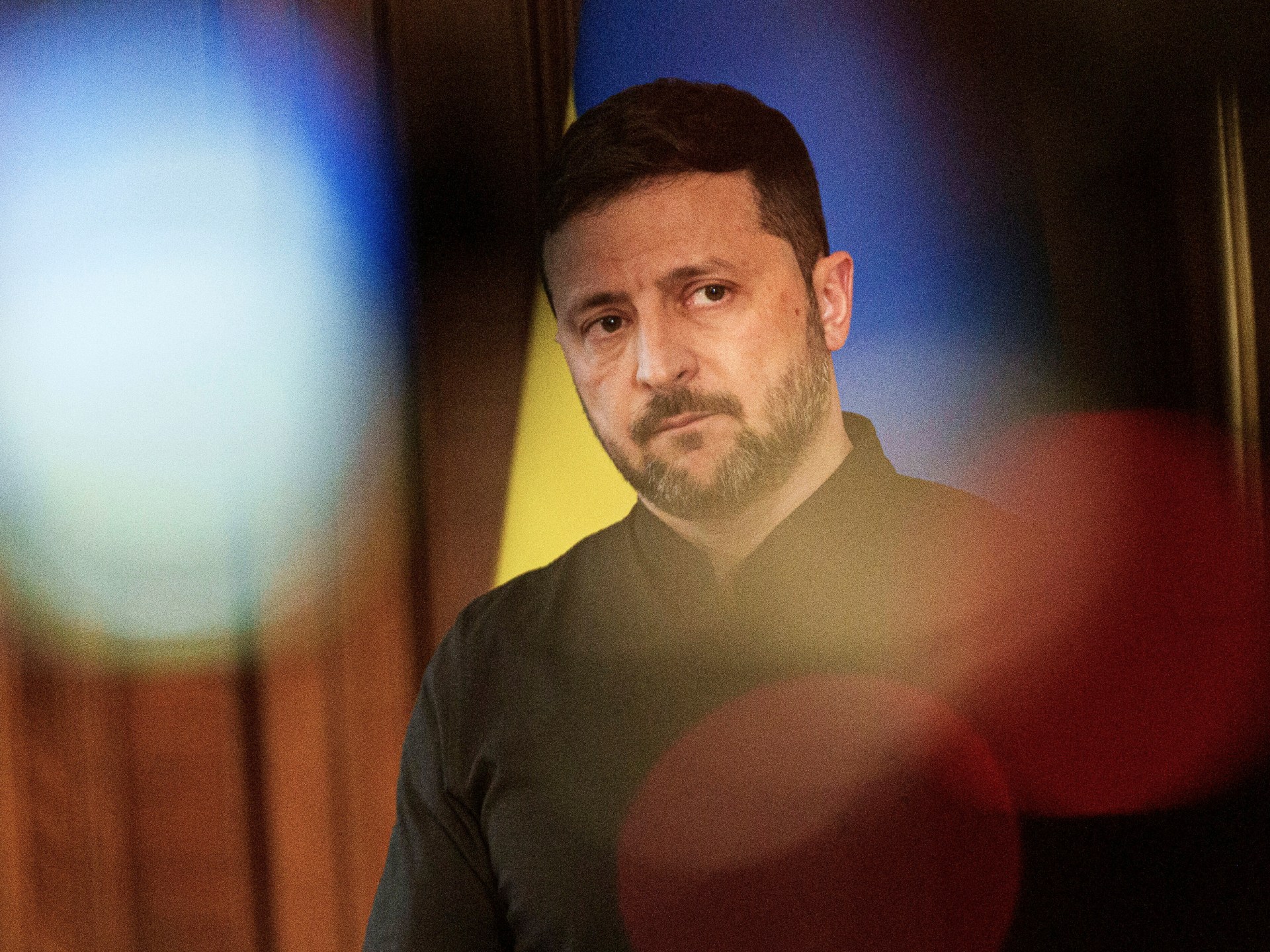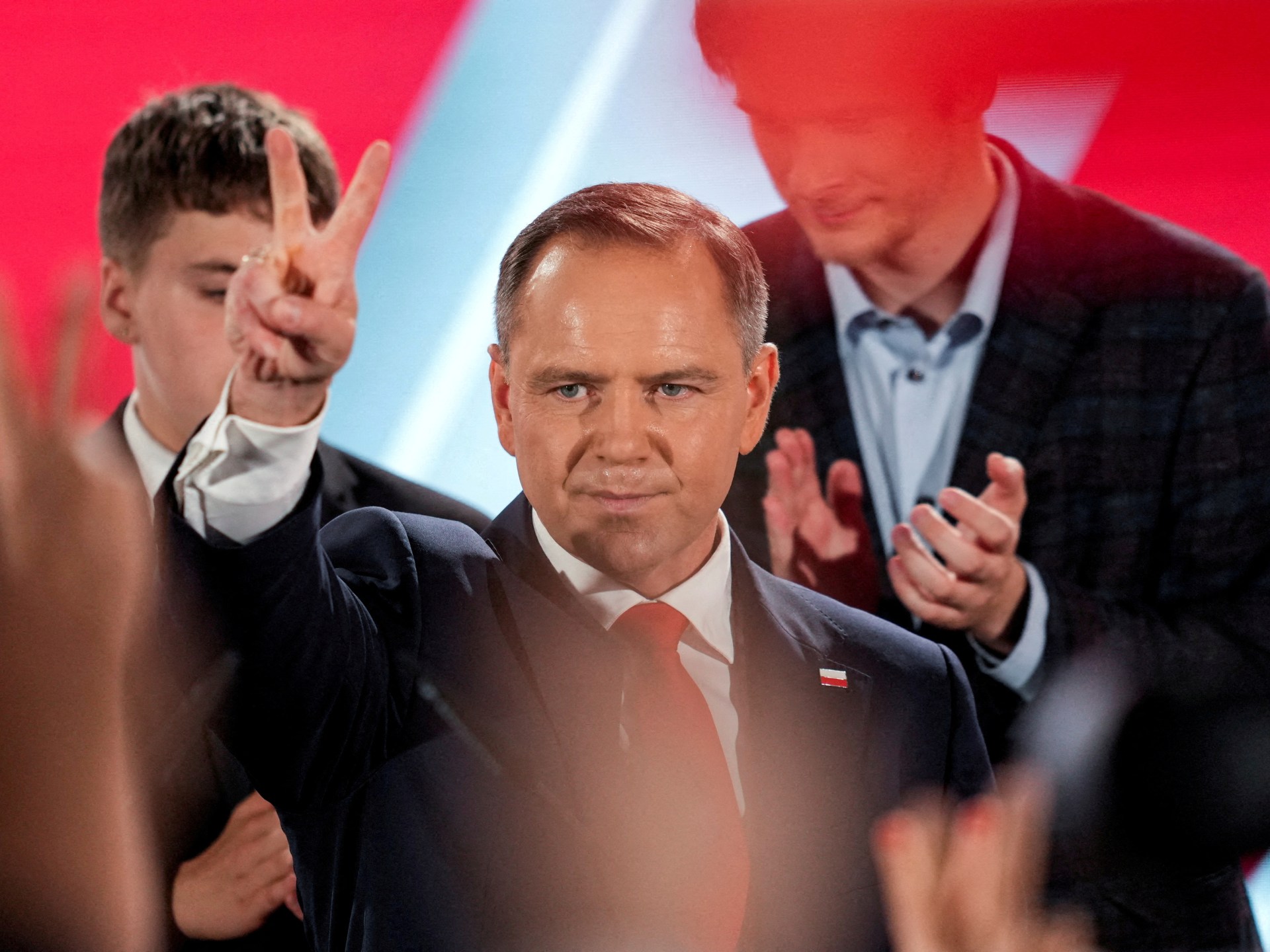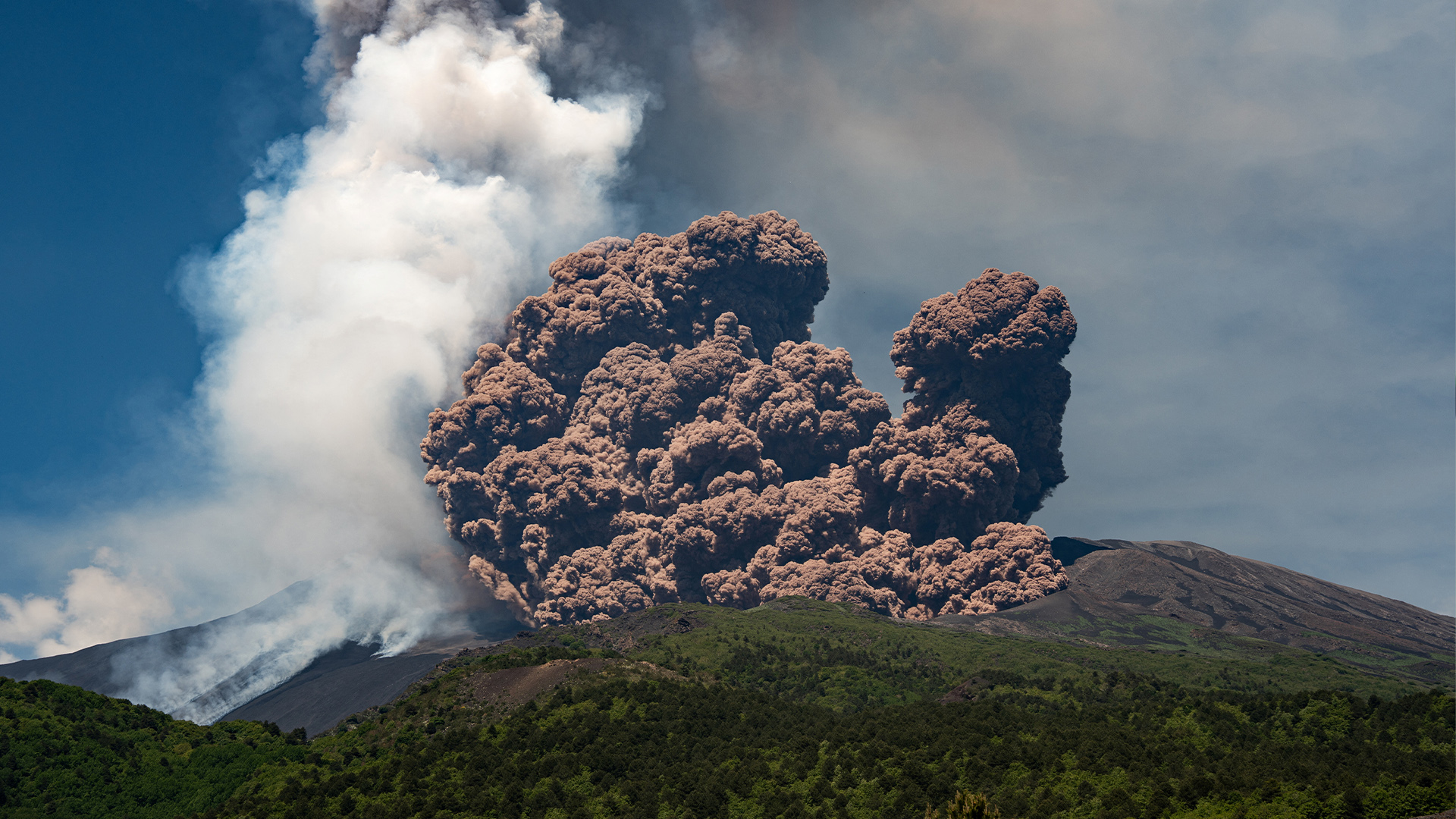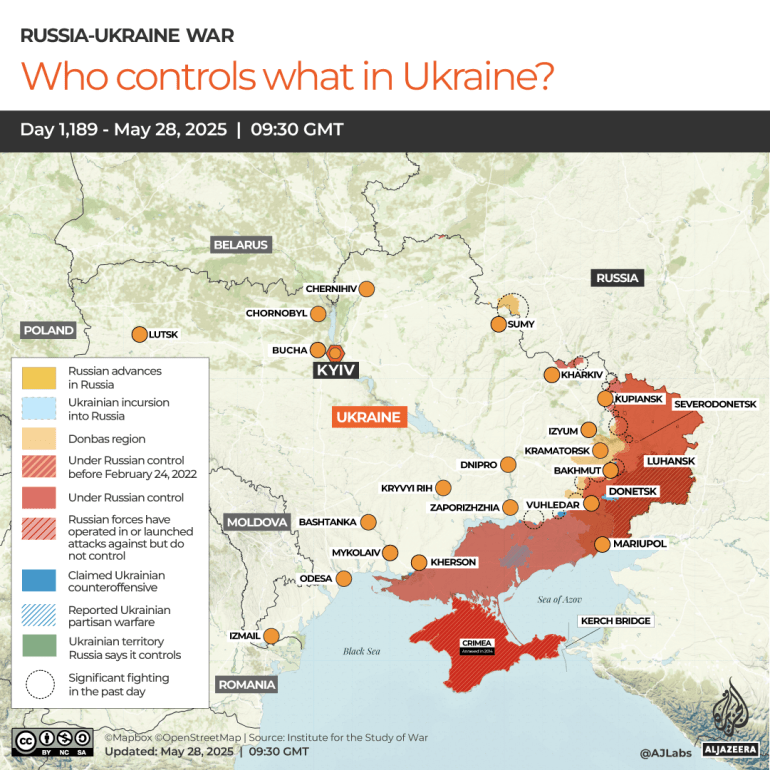In a major operation the day before the neighbours held peace talks in Istanbul, Ukrainian drones targeted several military hangars deep inside Russia on Sunday.
Russian Defense Ministry reported that Ukraine had launched drone strikes that targeted five regions of Russian military installations, which set off several aircraft on fire.
The regions of Murmansk, Irkutsk, Ivanovo, Ryazan, and Amur were the site of the attacks. According to the ministry, air defenses resisted the assaults in Murmansk and Irkutsk, but only two, respectively.
The Defense Ministry reported that several aircraft caught fire when FPV drones were launched from areas close to airfields in the Murmansk and Irkutsk regions. Unmanned aerial vehicles (UAVs) with cameras on the front that transmit live video to the operators, who then direct the drones using those images.
No injuries were reported despite the fires being extinguished. According to the Russian Defense Ministry, some of the attackers had been detained.
Volodymyr Zelenskyy, president of Ukraine, praised the “absolutely brilliant” drone attack on the Telegram messaging app on Sunday night.
The Sunday attacks were only the most recent audacious assaults on Russian military installations, territory, and symbols of power over the past three years of conflict, which were frequently acknowledged by Kyiv and occasionally widely believed to have been carried out by Ukrainian special forces.
What transpired on June 1?
On Sunday, Zelenskyy claimed 117 drones had been used to attack Russian bases. He claimed that “Russia has suffered very tangible losses, and this is legitimate.”
In a series of drone strikes on Russian air bases thousands of kilometers away from the front line, the Security Service of Ukraine (SBU) reported hitting Russian military aircraft worth a total of $7 billion.
The targets included Olenya airbase in south Murmansk, which is located about 1,800 kilometers (1, 120 miles) from Ukraine, and Belaya airbase in Irkutsk, which is located about 4,300 kilometers (2, 670 miles) away from the Ukrainian border.
Multiple local media reports in Ukraine earlier on Sunday claimed that the SBU had used drones that had been smuggled deep into Russia and hidden inside trucks.
According to reports, four airbases were hit by at least 41 Russian-made heavy bombs. Russian strategic bombers, which it claims fire long-range missiles at Ukrainian cities, were reportedly hit by the strikes on Tu-95 and Tu-22.
Although Russia has yet to confirm the extent of the damage, the attack could represent Ukraine’s most destructive drone strike to date.
According to John Hendren, a reporter for Al Jazeera from Kyiv, the attack is “an audacious strike, one that Ukraine has been patiently and eagerly awaiting,” and it comes after Russian airstrikes into Ukraine have dramatically increased over the past few weeks.
What’s the background like?
In recent days, drone attacks on the other side have been intensified by both Russia and Ukraine.
Last week, at least 16 civilians were killed when Russia launched more than 900 kamikaze drones and 92 missiles. In the Tula, Alabuga, and Tatarstan regions, where Kyiv used at least 800 drones, days of Ukrainian strikes on Russian military infrastructure followed.
Meanwhile, Ukraine hosted a delegation headed by Rustem Umerov, its defense minister, for Monday’s meeting with Russian officials in Istanbul. A previous May 16 round of negotiations resulted in a deal that included 1, 000 war prisoners for each country. Following Monday’s discussions, a new prisoner swap was agreed upon.
Zelenskyy, who has previously expressed doubts about Russia’s commitment to peace talks, stated that the Ukrainian delegation would have specific priorities before heading to Istanbul, including “a complete and unconditional ceasefire” and the return of prisoners and kidnapped children.
Russia has stated that it has come up with its own peace plan and that a Turkish suggestion for a leaders’ meeting has been rejected.
US President Donald Trump’s demand for a quick resolution to the three-year conflict fueled Monday’s meeting in Turkiye. However, there were no significant breakthroughs at the meeting.
Trump recently expressed his frustration with Russian President Vladimir Putin, who has been expressing his frustration with the lack of progress toward a ceasefire.
On May 25, Trump referenced Putin in a statement that read, “Something has happened to him. He has become “absolutely crazy”!
Trump reportedly said to reporters, “He’s firing rockets into Kyiv and other cities while we’re talking.”
The US president has not yet responded to the Ukrainian airbase attacks from Sunday.
The latest stunning, attention-grabbing attacks have come to mind for Russia since it first launched the full-fledged invasion of Ukraine in February 2022.
Crimea Bridge attacks, 2022 and 2023
Ukrainians raged in pain four years after Russia annexed the Crimean Peninsula by crossing a brand-new bridge connecting the Russian mainland with the peninsula.
Ukraine would exact revenge in 2022 and 2023, firstly.
A portion of the bridge was destroyed by a truck explosion in October 2022 that Russia blamed on Ukraine. Putin attempted to resurrect the symbolism of 2018, this time driving across it in a Mercedes, after the damage was repaired by Russia.
However, Ukraine would retaliate. The bridge that provides Russia’s forces with a crucial supply route in Ukraine was destroyed in July 2023. According to the National Anti-Terror Committee of Russia, two Ukrainian-made sea drones carried out the strike. According to officials, a child was hurt and two people were killed.
2023 attacks by the Black Sea Fleet
Ukraine launched a number of attacks on occupied Crimea in September 2023, targeting key Russian Black Sea Fleet installations close to Sevastopol with drones and missiles.
Verkhnosadove, the communications command center for the Black Sea Fleet, was revealed in satellite images after the initial attack.
According to the Ukrainian broadcaster Suspilne, Ukraine retaliated with a strike on the Saky airfield in Crimea, which was home to 12 Russian combat aircraft, including Su-24 and Su-30 fighter-bombers.
The most devastating of the attacks,  , occurred on September 22.
34 officers, including fleet commander Admiral Viktor Sokolov, were reported dead after Ukraine struck the Black Sea Fleet’s command center, according to the report. 105 additional soldiers reportedly suffered injuries.
Kremlin attack, 2023
The Kremlin, the most powerful Russian power for centuries, was attacked in the dead of night in early May 2023 as images and grainy video of the red building’s citadel appeared in various locations around the world captured flashes of light from small explosions.
Two Ukrainian drones, according to Moscow, were used in the attack on Putin’s residence but were disabled by electronic defenses.
The Kremlin stated in a statement that the actions were part of a planned terrorist attack and an attempted murder of the president, which were carried out on the eve of the May 9 Parade, which included the gathering of foreigners.
Zelenskyy denied that his country had attacked the country’s president or capital.
At a press conference in Helsinki, Finland, Zelenskyy said, “We fight on our territory, not against Putin, or against Moscow.” However, independent analysts, including those from Western allies who are Ukrainian allies, think that Ukrainian special forces were responsible for the Kremlin’s drone attacks.
In the escalating conflict between the neighbors, Ukraine would blur the line between its territory and that of Russia a year later.
Kursk invasion, 2024 and 2025
On August 6, 2024, Ukrainian forces unexpectedly attacked the Kursk region, causing surprise destruction to Moscow. As a result of Ukraine’s offensive in Western Russia, Russia began to evacuate the neighboring Belgorod region.
At the height of the incursion, Ukrainian forces occupied Kursk, which was roughly twice the size of Singapore, for nearly 1,400 square kilometers (540 square miles).
Prior to Ukraine’s January-launching second wave of attacks, Russia already had most of the land it had lost in Kursk by the start of 2025.






